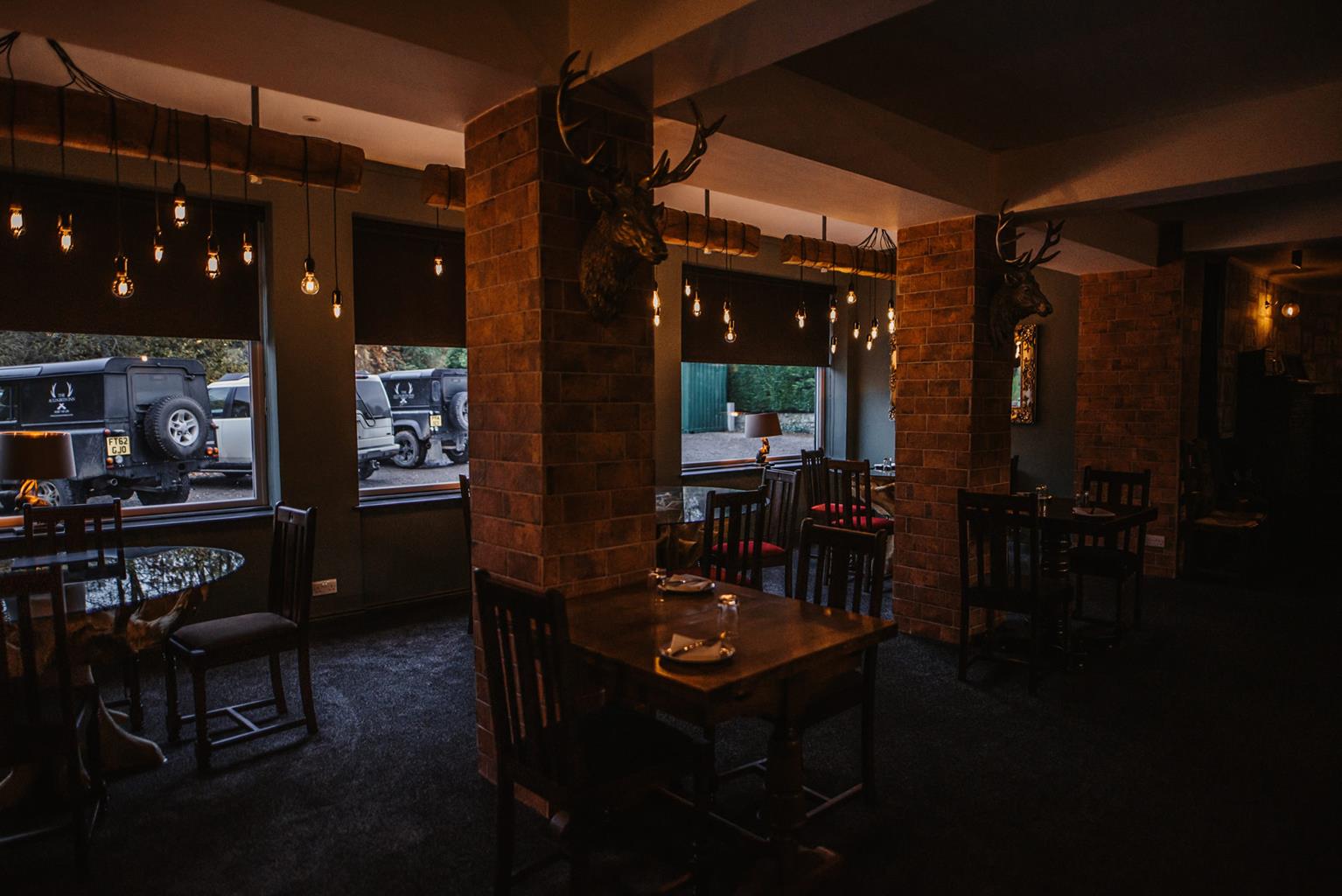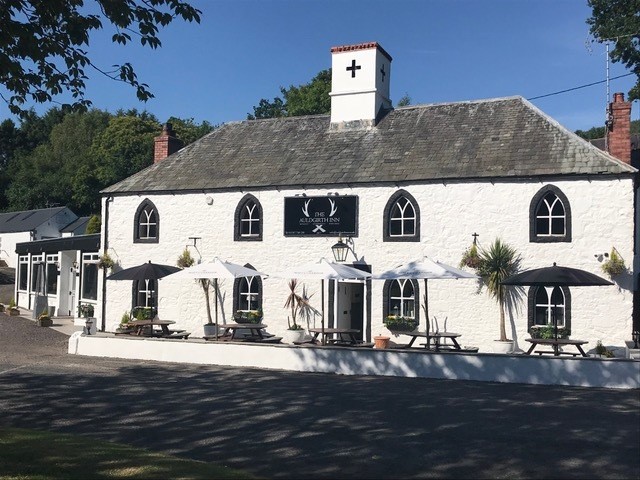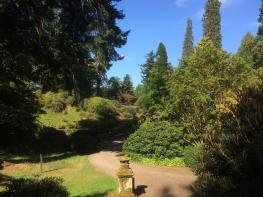Overlooking the River Nith, in two acres of secluded gardens, this family-run country house…
Wanlockhead: Scotland's Highest Village

Discover the secrets of lead and gold mining in 'God's Treasure House'.
3.75 miles (6kms)
About the walk
A unique combination of changing pressures within the earth's crust several million years ago led to the formation of rich mineral veins in this part of the Southern Uplands. Everything from gold to zinc and copper has been found locally, but it was the rich deposits of lead that resulted in the establishment of Scotland's highest village. By the 17th century a permanent, if primitive, settlement was established. Accommodation consisted of one-room cottages with often as many as eight people living in them. They cooked over the open fire in the middle of the room and smoke was vented through a hole in the roof. By the late 19th century, when lead mining was at its peak, some 850 people lived here in much improved cottages. These cottages were bigger, with an attic room and a proper cooking range. In 1871 the miners founded a co-operative society, bought all their supplies there and received a share of the profits. Amazingly this continued until 1971.
A Thriving Community
The miners valued the little leisure time they had and were very active in forming local clubs and societies. There were curling, bowling and quoiting clubs, a drama group and even a silver band. The Library, the second oldest subscription library in Europe, was founded in 1756 by the minister and a small group of villagers. Wanlockhead fared better than most libraries, with a donation of books from the local landowner the Duke of Buccleuch. He also funded the building of a new school and the salary of the teacher. The miners' children learned to read, write and count and could also take lessons in Latin and Greek. A government inspector visiting in 1842 was so impressed by the standard of learning he concluded that 'the children of the poor labourers of Wanlockhead are under as good, or perhaps better system of intellectual culture than even the middle class children of South Britain generally'.
As the price of lead slumped, and mines became exhausted, the miners gradually drifted away. The last of the mines, Glencrieff, closed in 1934 and the village went into decline until only 30 people remained. In the 1960s the local authority offered to re-house them elsewhere but they resolutely refused to leave. Thanks to their determination, an influx of new blood, renovation of houses and the opening of the Museum of Lead Mining, Wanlockhead has survived as a community into the 21st century. But it almost vanished, like countless other mining villages, which are now just names on the map; a few ruins and half-forgotten tales.
Walk directions
With the museum to your back turn left and join the Southern Upland Way. Head uphill on steps then, at the top, cross to a stone building with a large white door. Turn right on to a rough road, cross the main road and take the public footpath to Enterkine Pass. Follow this to the front of a white house.
Turn left on to the course of an old railway line. Follow this, cross a road then go through a long cutting to reach a fence. Go over a stile to get to Glengonnar Station then follow the narrow path that runs along the left side of the railway tracks from here. Eventually the path runs on to a rough road and in the distance you will see two terraced houses.
At the point where telephone wires intersect the road, turn left at the pole on the left-hand side and follow the line of the fence down to some sheep pens. Turn right at the end of the pens and walk out to the main road.
Turn right then almost immediately left on to a hill road. Walk uphill on this until the road bears sharp right and a dirt track forks off to the left. Turn left on to the track and keep on it until you reach a gate. Cross over, then veer left on to a faint track. Follow the track downhill to the point where it comes close to the corner of a fence on your left.
Cross the fence and go straight ahead on a faint track, picking your way through the heather. Eventually, as the track begins to look more like a path, you will reach a fork. Go to the right here and cross the flank of the hill passing through some disused tips.
The path at this point is little more than a series of sheep tracks and may disappear altogether, but that is not a problem. Ahead of you is a large conical spoil heap and, provided you keep heading towards it, you know you will be going in the right direction.
Towards the end of the hill the track heads left, starts to make its way downhill, then passes behind a row of cottages. Veer right, downhill, after the cottages to join the road. Turn left and continue past Glencrieff cottages, then turn right, leaving the road and heading downhill again. Cross a bridge and climb up on to the Southern Upland Way. Turn left along it and follow this back to the car park.
Additional information
Footpaths, hill tracks, hillside and old railway lines, 1 stile
Hills, mining relics and village
Keep on lead near livestock
OS Explorer 329 Lowther Hills, Sanquhar & Leadhill
Museum of Lead Mining car park
At car park
WALKING IN SAFETY
Read our tips to look after yourself and the environment when following this walk.
Find out more
Also in the area
About the area
Discover Dumfries & Galloway
Dumfries and Galloway is a wonderfully undiscovered corner of Scotland – a romantic land of wooded glens, high hills and exposed moorland, haunted by its colourful past and the ghosts of those who fell in fierce and bloody battles. Heading west from Gretna Green you soon reach Dumfries, straddling the River Nith, where you may see red-breasted mergansers in summer.
The market town has strong associations with one of Scotland’s most famous sons, Robert Burns, who farmed nearby and returned to Dumfries towards the end of his life. You’ll find Burns-related visitor attractions around town, plus a portfolio of other sights ranging from ruined castles and abbeys to quirky museums. You can see for miles from the Camera Obscura, which occupies the top floor of the 18th-century windmill.
To the north lies a vast and endless landscape; mile upon mile of open moorland and afforested slopes stretching towards the Ayrshire coast. On the long haul to Stanraer, you’ll want to make regular stops and visit places like Gatehouse of Fleet, a delightful 18th-century planned town, and Creetown, a planned village on the estuary on the River Cree. Perfect for walking and fishing, Dumfries and Galloway seems gloriously untouched by 20th-century progress.
Nearby stays
Restaurants and Pubs
Nearby experiences
Recommended things to do
Why choose Rated Trips?
Your trusted guide to rated places across the UK
The best coverage
Discover more than 15,000 professionally rated places to stay, eat and visit from across the UK and Ireland.
Quality assured
Choose a place to stay safe in the knowledge that it has been expertly assessed by trained assessors.
Plan your next trip
Search by location or the type of place you're visiting to find your next ideal holiday experience.
Travel inspiration
Read our articles, city guides and recommended things to do for inspiration. We're here to help you explore the UK.















